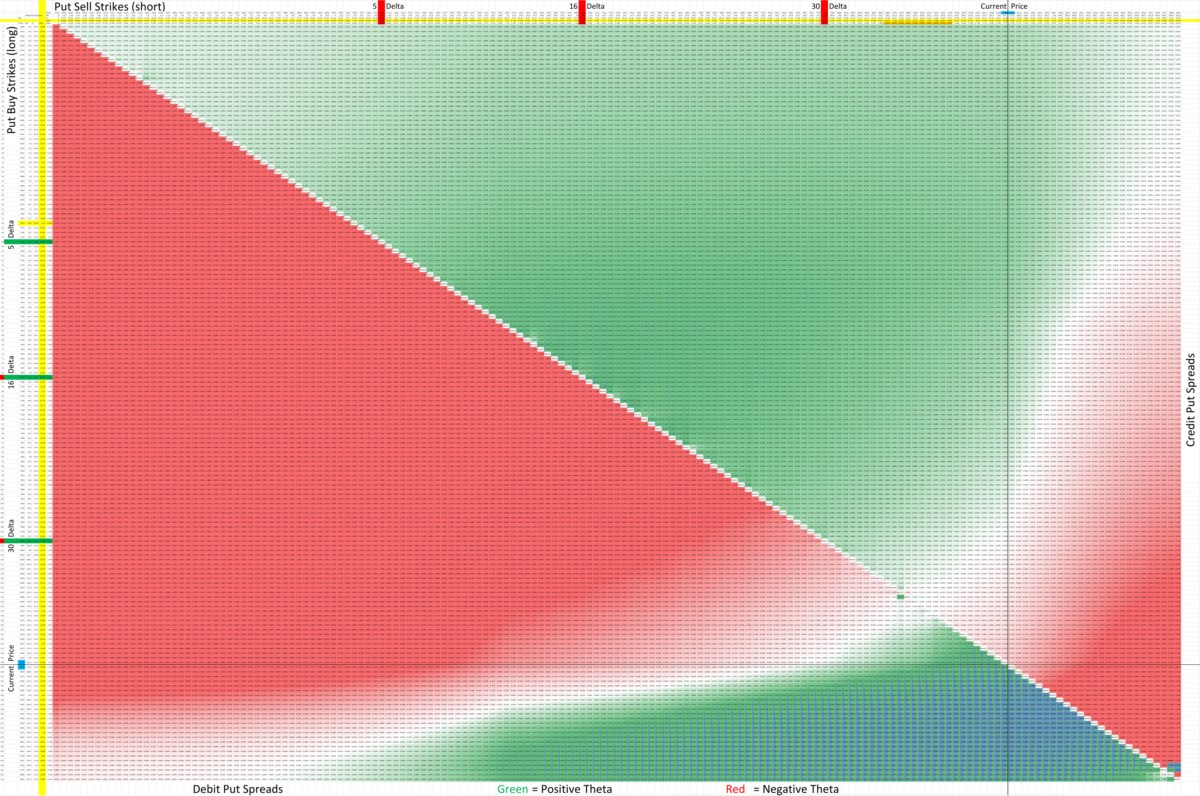

Finance
How To Check If I Have Student Loans
Published: January 19, 2024
Learn how to check if you have student loans and manage your finances effectively. Find out the status of your loans and take control of your financial future.
(Many of the links in this article redirect to a specific reviewed product. Your purchase of these products through affiliate links helps to generate commission for LiveWell, at no extra cost. Learn more)
Table of Contents
- Introduction
- Step 1: Gather Your Personal Information
- Step 2: Access the National Student Loan Data System (NSLDS)
- Step 3: Create an Account or Log In
- Step 4: Review Your Loan Summary
- Step 5: Contact Your Loan Servicer
- Step 6: Check Your Credit Report
- Step 7: Review Your Financial Aid Documents
- Step 8: Determine Repayment Status
- Step 9: Seek Assistance from the Student Aid Office
- Step 10: Consider Loan Forgiveness or Discharge Options
- Conclusion
Introduction
Student loans are a common way for individuals to finance their education and pursue their dreams of higher education. However, keeping track of your student loans can sometimes be a challenge, especially if you have borrowed from multiple sources or if you are unsure of the status of your loans. If you find yourself wondering, “How do I check if I have student loans?” don’t worry, you’re not alone.
In this article, we will guide you through the step-by-step process of checking if you have student loans. From accessing the National Student Loan Data System (NSLDS) to reviewing your loan summary, we will provide you with the tools and resources you need to uncover the details of your student loans. Whether you are a recent graduate, a current student, or someone who is looking to get their financial affairs in order, this article is here to help.
Understanding the status of your student loans is crucial for several reasons. First and foremost, knowing the amount you owe and the terms of your loans allows you to make informed financial decisions and plan for your future. Additionally, being aware of your loan status is essential for ensuring that you are on track with your loan repayment obligations and avoiding any potential consequences or penalties.
While it may seem daunting at first, checking if you have student loans is a manageable process that anyone can undertake. So, let’s dive in and take the first steps towards gaining a clearer understanding of your student loan status.
Step 1: Gather Your Personal Information
The first step in checking if you have student loans is to gather all the necessary personal information. Having this information readily available will expedite the process and ensure that you have accurate details while accessing your loan information.
Here are the key pieces of personal information you should gather:
- Your Social Security Number (SSN): Your SSN is a crucial identifier that is used to track your student loan information. Make sure to have your SSN handy.
- Date of Birth: Providing your correct date of birth helps in verifying your identity and accessing your loan information.
- Full Name: Ensure that you have your full legal name as it appears on your official documents, such as your Social Security card and driver’s license.
- Contact Information: Have your current address, email, and phone number available. This information may be required for verification purposes.
- Previous School Information: If you have attended multiple schools, make a note of the names and locations of the institutions you have attended.
By gathering this information beforehand, you will be well-prepared to move on to the next steps in checking if you have student loans. Now that you have gathered your personal information, let’s move on to accessing the National Student Loan Data System (NSLDS) in the next step.
Step 2: Access the National Student Loan Data System (NSLDS)
The National Student Loan Data System (NSLDS) is the central database that stores information on federal student loans, grants, and other financial aid programs. It is a valuable resource for checking if you have student loans and for obtaining detailed information about your loans. Follow these steps to access the NSLDS:
- Go to the NSLDS website: Visit the official NSLDS website at www.nslds.ed.gov using a web browser of your choice.
- Click on “Financial Aid Review”: On the NSLDS website, locate the “Financial Aid Review” option and click on it.
- Read and Accept the Privacy Statement: You will be prompted to read and accept the NSLDS Privacy Statement. Make sure to carefully review the statement, and once you agree, click on the “Accept” button.
- Enter Your Personal Information: On the next page, you will need to enter your personal information, including your Social Security Number (SSN), Date of Birth, and the first two letters of your last name. Fill in the required fields accurately and click on the “Submit” button.
- Verify Your Identity: To verify your identity, you may be asked a series of security questions based on your personal information or your loan details. Provide the correct answers to the questions to proceed.
- Create a Username and Password: Once your identity is verified, you will need to create a username and password for your NSLDS account. Choose a strong and unique combination that you can easily remember. Note down your login credentials for future reference.
Once you have completed these steps, you will have successfully accessed the NSLDS and created an account. In the next step, we will guide you through reviewing your loan summary.
Step 3: Create an Account or Log In
Creating an account or logging in to an existing account is an essential step in accessing your student loan information. By creating an account on the National Student Loan Data System (NSLDS) or logging in with your existing credentials, you will gain access to your loan details, including the types of loans you have, the loan servicers, and the outstanding balances.
Here’s how you can create an account or log in to the NSLDS:
- If you have already completed Step 2 and created an account on the NSLDS, simply go to www.nslds.ed.gov and click on the “Financial Aid Review” option.
- On the following page, enter your username and password in the designated fields and click on the “Sign In” button to log in to your account.
- If you haven’t yet created an account on the NSLDS, follow the steps mentioned in Step 2 to access the NSLDS website and provide your personal information to verify your identity.
- After successfully verifying your identity, you will be prompted to create a username and password for your NSLDS account. Choose a strong and unique combination that you can remember easily.
- Once your account is created or you have logged in, you will be taken to your NSLDS dashboard, where you can view your loan summary.
Creating an account or logging in to the NSLDS is a crucial step as it allows you to access and manage your student loan information conveniently. In the next step, we will guide you through the process of reviewing your loan summary.
Step 4: Review Your Loan Summary
Now that you have successfully accessed the National Student Loan Data System (NSLDS) and logged into your account, it’s time to review your loan summary. The loan summary provides a detailed overview of your student loans, including the loan types, outstanding balances, interest rates, and loan servicers.
Here’s how you can review your loan summary:
- On your NSLDS dashboard, look for the section that displays your loan summary. This section will provide an overview of your federal student loans, including Direct Loans, Stafford loans, Perkins loans, and more.
- Take note of the loan types listed, as well as the outstanding balances associated with each loan. This information will give you a clear picture of your total student loan debt.
- Review the interest rates for each loan. Understanding the interest rates is essential for budgeting and planning your loan repayment strategy.
- Make note of the loan servicers. Loan servicers are third-party companies responsible for collecting payments on behalf of the loan providers. Knowing your loan servicers will help you establish contact for questions, concerns, or assistance regarding your loans.
- Take the time to thoroughly review all the details provided on your loan summary. If you notice any discrepancies or have any questions, make sure to reach out to your loan servicer or the student aid office for clarification.
Reviewing your loan summary is a crucial step in understanding the status of your student loans and taking control of your financial future. It will provide you with valuable information to make informed decisions about your loan repayment strategy. In the next step, we will discuss how to contact your loan servicer for further assistance.
Step 5: Contact Your Loan Servicer
After reviewing your loan summary on the National Student Loan Data System (NSLDS) and gathering information about your federal student loans, it is crucial to establish contact with your loan servicer. Your loan servicer is responsible for managing your student loan account and can provide you with important details and assistance regarding your loans.
Here are the steps to contact your loan servicer:
- Refer to your loan summary on the NSLDS and identify the loan servicers associated with your student loans. The loan servicers are typically listed alongside each loan.
- Make note of the contact information for each loan servicer. This may include their website, customer service phone number, and email address. Some loan servicers may also have online account portals where you can manage your loans.
- Visit the website of each loan servicer and explore the resources available. Many loan servicers offer online portals, where you can access your account details, make payments, and find answers to common questions.
- If you have specific questions or need assistance regarding your student loans, contact your loan servicer directly. Use the provided customer service phone number or email address to reach out to them. Be prepared to provide your account information or answer security questions for identity verification purposes.
- When contacting your loan servicer, be sure to inquire about important details such as repayment options, deferment or forbearance options, interest rates, and any available loan forgiveness programs. It is essential to have a clear understanding of your loan terms and available options for repayment.
- Take note of any instructions or information provided by your loan servicer. They may guide you on how to proceed with your loan repayment, provide necessary forms, or offer resources to help manage your loans effectively.
Remember, your loan servicer is there to assist you and provide valuable guidance throughout your loan repayment journey. Don’t hesitate to reach out to them for any questions or concerns you may have. In the next step, we will explore another option to check if you have student loans: reviewing your credit report.
Step 6: Check Your Credit Report
Another way to check if you have student loans is by reviewing your credit report. Your credit report provides a comprehensive overview of your financial history, including any outstanding debts, including student loans. Checking your credit report can help you identify any loans that may not be listed on the National Student Loan Data System (NSLDS) or if you have private student loans.
Follow these steps to check your credit report:
- Request a free copy of your credit report: You are entitled to one free credit report per year from each of the three major credit bureaus – Equifax, Experian, and TransUnion. You can request a copy of your credit report by visiting www.annualcreditreport.com or by contacting each credit bureau individually.
- Review your credit report carefully: Once you receive your credit report, thoroughly review it for any student loan accounts. Look for entries related to federal or private student loans. Take note of the loan balances, loan servicers, and any other relevant details.
- If you find any discrepancies or unfamiliar student loan accounts, take immediate action: If you come across a student loan account that you don’t recognize or suspect any errors on your credit report, contact the credit bureau reporting the information to dispute the inaccuracies. They will guide you through the process of resolving the issue, including removing any incorrect information from your credit report.
- Remember to check your credit report periodically: Checking your credit report regularly is essential for staying updated on your financial obligations and ensuring the accuracy of the information. You can review your credit report annually or even more frequently if you suspect any fraudulent activity or discrepancies.
Checking your credit report is an additional measure to ensure that all your student loan accounts are accounted for. It provides a comprehensive view of your overall financial standing. In the next step, we will explore another avenue to check if you have student loans: reviewing your financial aid documents.
Step 7: Review Your Financial Aid Documents
Reviewing your financial aid documents can be another valuable step in checking if you have student loans. These documents may include your loan agreements, promissory notes, and any other paperwork related to your financial aid. By carefully examining these documents, you can gain insights into the details of your student loans.
Follow these steps to review your financial aid documents:
- Gather all your financial aid documents: Collect all the paperwork related to your student loans, including loan agreements, promissory notes, and any other loan-related documents you received at the time of borrowing.
- Carefully read through the documents: Take the time to thoroughly read through each document. Pay attention to the loan amounts, interest rates, repayment terms, and any relevant provisions or conditions.
- Note any discrepancies or questions: If you come across any discrepancies between the information provided in your financial aid documents and what you have found through previous steps, make a note of them. Also, jot down any questions you may have about your loans and terms.
- Contact your loan provider or student aid office for clarification: If you have identified any discrepancies or have questions about your student loans based on your financial aid documents, reach out to your loan provider or the student aid office for clarification. They will be able to provide accurate information and address any concerns you may have.
Reviewing your financial aid documents can help you gain a better understanding of the specific terms and conditions of your student loans. It is an essential step in ensuring that you have a clear picture of your loan obligations. In the next step, we will discuss how to determine your loan repayment status.
Step 8: Determine Repayment Status
Once you have gathered all the necessary information about your student loans, it is important to determine your repayment status. Understanding your repayment status will help you plan your finances and ensure that you meet your loan obligations in a timely manner.
Here are the steps to determine your repayment status:
- Review your loan servicer’s website or contact them directly: Your loan servicer is the best source of information regarding your repayment status. Visit their website or contact them via phone or email to inquire about the status of your loans.
- Understand the different repayment plans available: Familiarize yourself with the various repayment plans offered for federal student loans, such as Standard Repayment, Income-Driven Repayment (IDR), or Graduated Repayment. Determine which repayment plan you are currently on or explore options if you need to switch to a different plan that suits your financial situation.
- Check your loan repayment due dates: Find out when your first loan repayment is due. Knowing your repayment due dates will help you plan your budget and ensure that you make your payments on time.
- Calculate your monthly payment amount: Use online loan calculators provided by your loan servicer or other reliable sources to estimate your monthly loan payment amount based on your loan balance, interest rate, and repayment plan. This will give you an idea of what to expect for your monthly payments.
- Set up automatic payments if available: Many loan servicers offer the option to set up automatic payments from your bank account. Setting up automatic payments can help you stay on top of your loan payments and avoid any late fees or penalties.
- Keep track of your repayment progress: Once you enter into repayment, it is important to stay organized and keep track of your loan repayments. Keep records of your payment history and regularly check your loan servicer’s online portal for updates on your repayment progress.
Understanding your repayment status and obligations is crucial for effectively managing your student loans. Take the time to determine your repayment status and explore the available options to ensure a successful and stress-free repayment journey. In the next step, we will discuss seeking assistance from the student aid office.
Step 9: Seek Assistance from the Student Aid Office
If you have questions or need additional assistance regarding your student loans, reaching out to the student aid office can provide valuable guidance and support. The student aid office at your educational institution can help clarify any uncertainties, offer advice, and provide resources related to student loans and financial aid.
Follow these steps to seek assistance from the student aid office:
- Locate the student aid office: Find the student aid office at your educational institution. You can typically find their contact information on the institution’s website or by asking the school’s administration.
- Contact the student aid office: Reach out to the student aid office either by phone, email, or in-person. Explain your situation and the specific questions or concerns you have regarding your student loans.
- Prepare necessary information and documentation: Before contacting the student aid office, gather any relevant documents or information related to your student loans. This may include loan statements, financial aid award letters, or correspondence with your loan servicer.
- Ask for guidance and clarification: Once connected with a representative from the student aid office, ask for their guidance and clarification on any uncertainties you have regarding your student loans. They can help explain loan terms, repayment options, and any available resources or programs that may be beneficial to you.
- Take notes and follow up: During your conversation with the student aid office, take notes on the information and advice provided. If there are any action steps recommended by the representative, make sure to follow up on them in a timely manner.
Seeking assistance from the student aid office can alleviate any confusion or concerns you may have about your student loans. They are there to support you and provide accurate information to help you effectively manage your loans. In the next step, we will discuss an additional option to consider: loan forgiveness or discharge programs.
Step 10: Consider Loan Forgiveness or Discharge Options
As you navigate your student loan journey, it is important to be aware of any loan forgiveness or discharge options that may be available to you. Loan forgiveness or discharge programs can provide significant relief by eliminating or reducing the amount of your student loan debt under certain qualifying criteria.
Here are the steps to consider loan forgiveness or discharge options:
- Research available programs: Explore the various loan forgiveness and discharge programs that may be applicable to your situation. These programs can include Public Service Loan Forgiveness (PSLF), Teacher Loan Forgiveness, Income-Driven Repayment (IDR) Forgiveness, or Total and Permanent Disability (TPD) Discharge, among others.
- Review eligibility requirements: Carefully review the eligibility requirements for each program to see if you meet the criteria. Some programs require specific employment in certain fields or public service organizations, while others may be based on your income or disability status.
- Contact your loan servicer or the student aid office: Reach out to your loan servicer or the student aid office to inquire about loan forgiveness or discharge programs. They can provide guidance on the available options, eligibility criteria, and the application process.
- Submit necessary documentation: If you qualify for a loan forgiveness or discharge program, gather the required documentation and submit your application according to the program’s guidelines. Be sure to carefully follow the instructions and provide accurate information.
- Follow up on the progress of your application: After submitting your application, stay in contact with your loan servicer or the appropriate organization handling the program to track the progress of your application. They will guide you through the process and keep you informed about any updates or additional steps required.
Loan forgiveness or discharge options can provide significant relief and help you manage your student loan debt. It is essential to explore these programs and determine if you qualify for any benefits. Remember to stay informed about the requirements and carefully follow the application process for the best chance at successful loan forgiveness or discharge.
By following these ten steps, you can effectively check if you have student loans and gain a comprehensive understanding of your loan status. Whether you are planning your repayment strategy or exploring available assistance programs, taking control of your student loans will empower you to make informed decisions and successfully manage your financial future.
Remember, if you have any specific questions or concerns regarding your student loans, it is always advisable to consult with a financial advisor or a professional in the field of student loans to ensure you receive personalized guidance tailored to your unique circumstances.
Now, armed with the knowledge and resources from these steps, you can confidently navigate your student loan journey and make informed decisions to achieve a successful and manageable financial future.
Conclusion
Checking if you have student loans may seem like a daunting task, but by following the ten steps outlined in this article, you can navigate the process with ease. From gathering your personal information to considering loan forgiveness options, these steps provide a comprehensive guide to understanding your student loan status.
By accessing the National Student Loan Data System (NSLDS), reviewing your loan summary, contacting your loan servicer, and exploring your financial aid documents, you can gain a clear understanding of the types of loans you have, your repayment obligations, and available resources for assistance. Additionally, checking your credit report and seeking guidance from the student aid office can provide further insight into your student loan status and potential options for repayment.
Whether you discover that you have federal student loans or private student loans, it is important to stay informed and take proactive steps to manage your debt responsibly. Understanding your repayment status, considering repayment plans, and setting up automatic payments can help you stay on track and avoid unnecessary fees or penalties.
Furthermore, being aware of loan forgiveness or discharge options can provide additional relief for those who qualify. By exploring these programs, you may find opportunities to reduce or eliminate your student loan debt, alleviating financial burden and allowing you to focus on your future goals.
Remember, if you have any questions or concerns, do not hesitate to reach out to your loan servicer or the student aid office for guidance. They are there to support you and provide the necessary information to help you navigate your student loans successfully.
With the knowledge gained from these steps, you are equipped to take control of your student loans and make informed decisions about your financial future. By effectively managing your student loans, you can pave the way for a brighter financial outlook and set yourself up for success in achieving your long-term goals.














